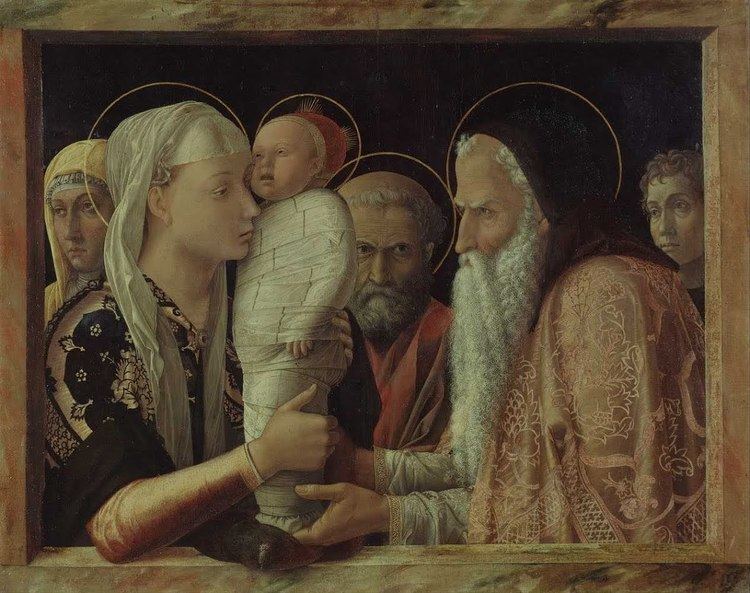Year c. 1455 Created 1455 | Medium Tempera on canvas Media Paint, Wood | |
 | ||
Dimensions 68.9 cm × 86.3 cm (27.1 in × 34.0 in) Genres Christian art, History painting Similar Andrea Mantegna artwork, Italian Renaissance artwork, Christian art | ||
The Presentation at the Temple is a painting by the Italian Renaissance artist Andrea Mantegna. Dating to c. 1455, it is housed in the Gemäldegalerie, Berlin, Germany.
Contents
History
The date of the painting is unknown, but it belongs to the painter's youth in Padua. Date ranges from 1453, when Mantegna married Nicolosia Bellini, daughter Jacapo Bellini painter and the sister of Giovanni and Gentile, both painters as their father, and 1460 when he left for Mantua. Bellini's Presentation at the Temple, explicitly inspired by Mantegna's, dates to around the latter year.
Description
The scene is set within a marble frame. The cushion on which the Child lies stands on it and partially juts out.
The Virgin Mary, in the foreground, is holding the Child while a bearded priest is near her. At the center, in penumbra, is Joseph with an aureola. Also in the background, at the sides, two spectators without aureola have been identified as possibly Mantegna's self-portrait and a portrait of his wife.
